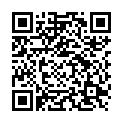|
|
|
| Module code: WIBAS-230 |
|
|
4V+2U (6 hours per week) |
|
9 |
| Semester: 2 |
| Mandatory course: yes |
Language of instruction:
German |
Assessment:
Written exam
[updated 30.07.2021]
|
WIBAS-230 (P450-0067) Industrial Engineering, Bachelor, ASPO 01.10.2007
, semester 2, mandatory course
|
90 class hours (= 67.5 clock hours) over a 15-week period.
The total student study time is 270 hours (equivalent to 9 ECTS credits).
There are therefore 202.5 hours available for class preparation and follow-up work and exam preparation.
|
Recommended prerequisites (modules):
None.
|
Recommended as prerequisite for:
WIBAS-450/550-M2f
[updated 21.03.2013]
|
Module coordinator:
Prof. Dr. Susan Pulham |
Lecturer: Prof. Dr. Susan Pulham
[updated 03.07.2009]
|
Learning outcomes:
Mathematics II:
After successfully completing this module, students will be able to solve problems using approximation methods, have mastered the elementary techniques of differential and integral calculus, will be able to solve geometric, physical, technical and business problems using calculus and will be able to model a real-life situation using mathematical methods.
Statistics:
Students will be able to process mass data using descriptive statistics methods and interpret such processing. They will be able to recognize stochastic situations as such and model them using stochastic methods. They will be able to calculate probability, determine appropriate distribution shapes, and calculate distribution parameters. They will have a basic understanding of hypothesis testing methods.
[updated 30.07.2021]
|
Module content:
Mathematics II:
1. Number sequences and limits
2. Introduction to differential calculus
3. Applications of differential calculus
a. Modeling using examples
b. Applications of differential calculus in economics
c. Physical-technical applications
d. Technical applications
4. Introduction to integral calculus
a. Area calculation and definite integrals
b. Definite and indefinite integrals
c. Integration techniques
d. Numerical integration
e. Area and volume calculations
f. Physical applications
5. Infinite series, Taylor series
6. Expansion and applications of differential and integral calculus
a. Infinite series
b. Plane curves
c. Differential equations
7. Geometrical, physical and technical applications of analysis
8. Analysis in business administration
The theoretical aspects of all topics will be presented and intensified by means of weekly exercises.
Statistics:
1. Descriptive statistics:
Basic terms
One- and two-dimensional frequency distributions
Measures of location and measures of spread/dispersion
Calculating correlation and regression
2. Probability calculus
Basic terms: random experiment, events, probability
Modeling
Multi-stage random experiments
Conditional probability and independence
Random variables, expected value, variance, normal distribution and limit theorems
3. Basic elements of inferential statistics
Problems with inferential statistics
Point and interval estimates
Hypothesis tests
[updated 30.07.2021]
|
Teaching methods/Media:
Mathematics:
Lecture:
Lecture at the blackboard, beamer and demonstrations using computers, in particular the computer algebra systems: MuPad, Derive, Mathematica, Maple and the dynamic geometry software Dynageo
Regularly revised lecture notes will be published for the module and additional written materials will be passed out and made available electronically.
Lecture notes and materials will be available electronically.
Exercises
Homework will be assigned weekly and must be completed in writing.
It will be corrected ny Mr. Ohligschläger.
Exercises will be discussed by Mr. Ohligschläger on the blackboard and in teams.
Computers/software that will be used in the module and can and should be used by students for preparation and follow-up:
Texas Instruments Voyage 200 (Successor to TI 92)
Computer algebra systems: MuPad, Derive, Mathematica, Maple
Dynageo (dynamic geometry software)
Statistics:
Excel files with sample material, press reports and statistical studies will be used. Regularly revised lecture notes will be available for this course.
[updated 30.07.2021]
|
Recommended or required reading:
Mathematics II:
Brauch / Dreyer / Haacke: Mathematik für Ingenieure.
Fetzer / Fränkel: Mathematik für Fachhochschulen 1 und 2, VDI Verlag.
Papula: Mathematik für Ingenieure und Naturwissenschaftler, Bd. 1 und 2, Vieweg
Papula: Mathematische Formelsammlung
Teubner Preuß / Wenisch: Lehr- und Übungsbuch Mathematik 1, 2 und 3, Fachbuchverlag Leipzig.
Statistics:
Dietmaier, Christopher: Mathematik für Wirtschaftsingenieure. Fachbuchverlag Leipzig, Münch., Wien, 2005.
Fischer, Gerd: Stochastik einmal anders. Vieweg Verlag, Wiesbaden,1. Auflage 2005.
Henze, Norbert: Stochastik für Einsteiger. Vieweg Verlag, Wiesbaden, 5. Auflage 2004.
Sachs, Michael: Wahrscheinlichkeitsrechung und Statistik für Ingenieurstudenten an Fachhochschulen. Fachbuchverlag Leipzig/ München/ Wien, 2003.
[updated 30.07.2021]
|

